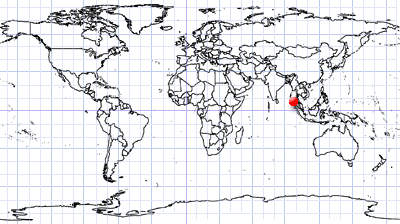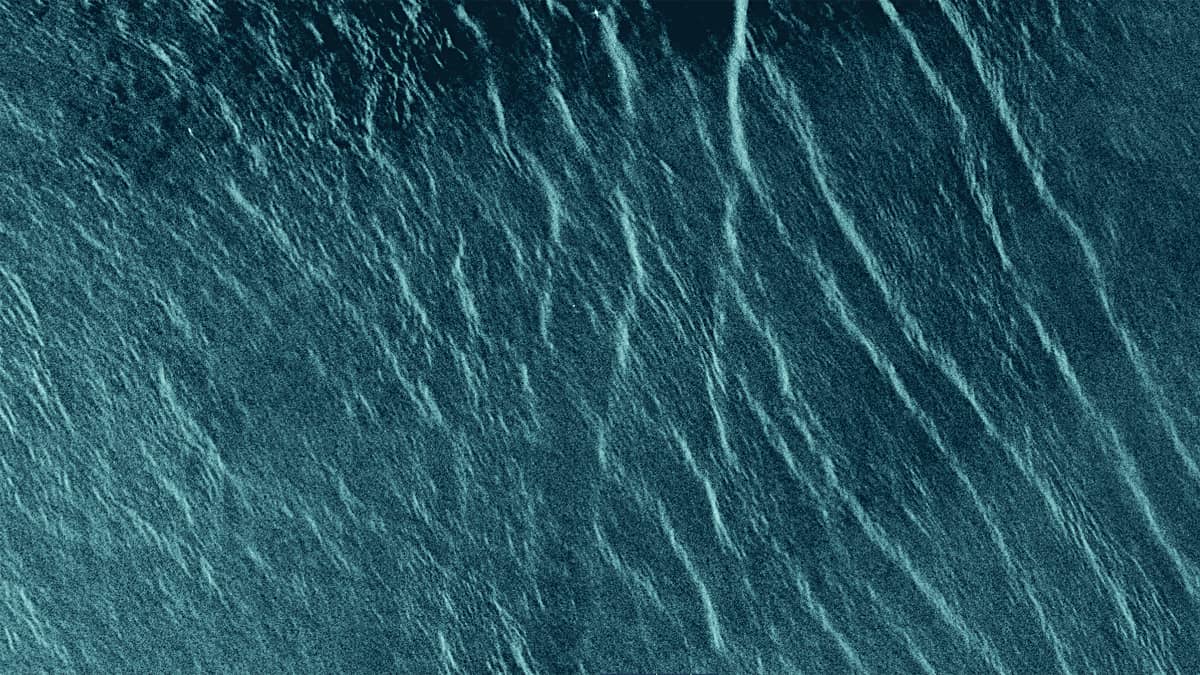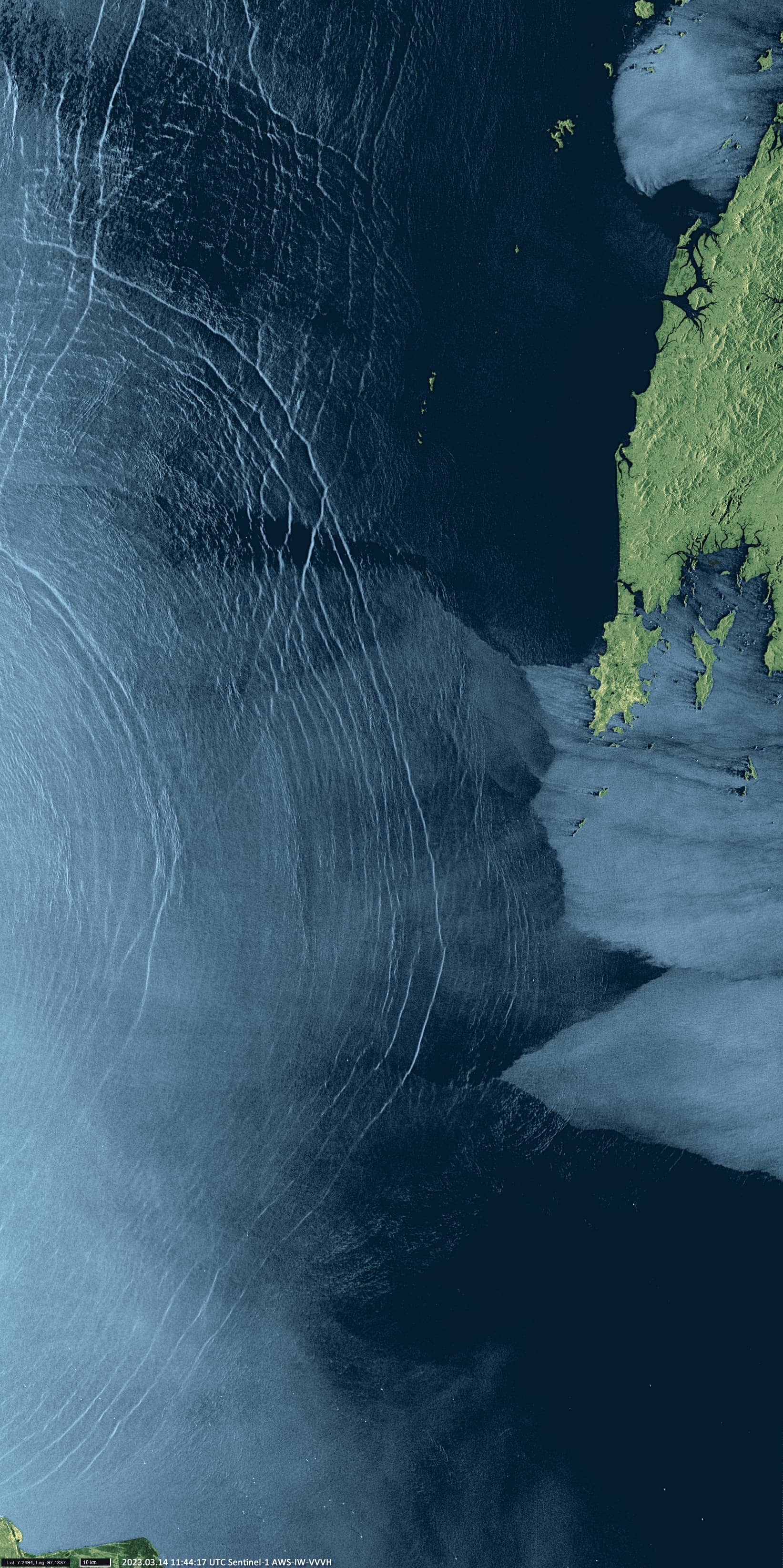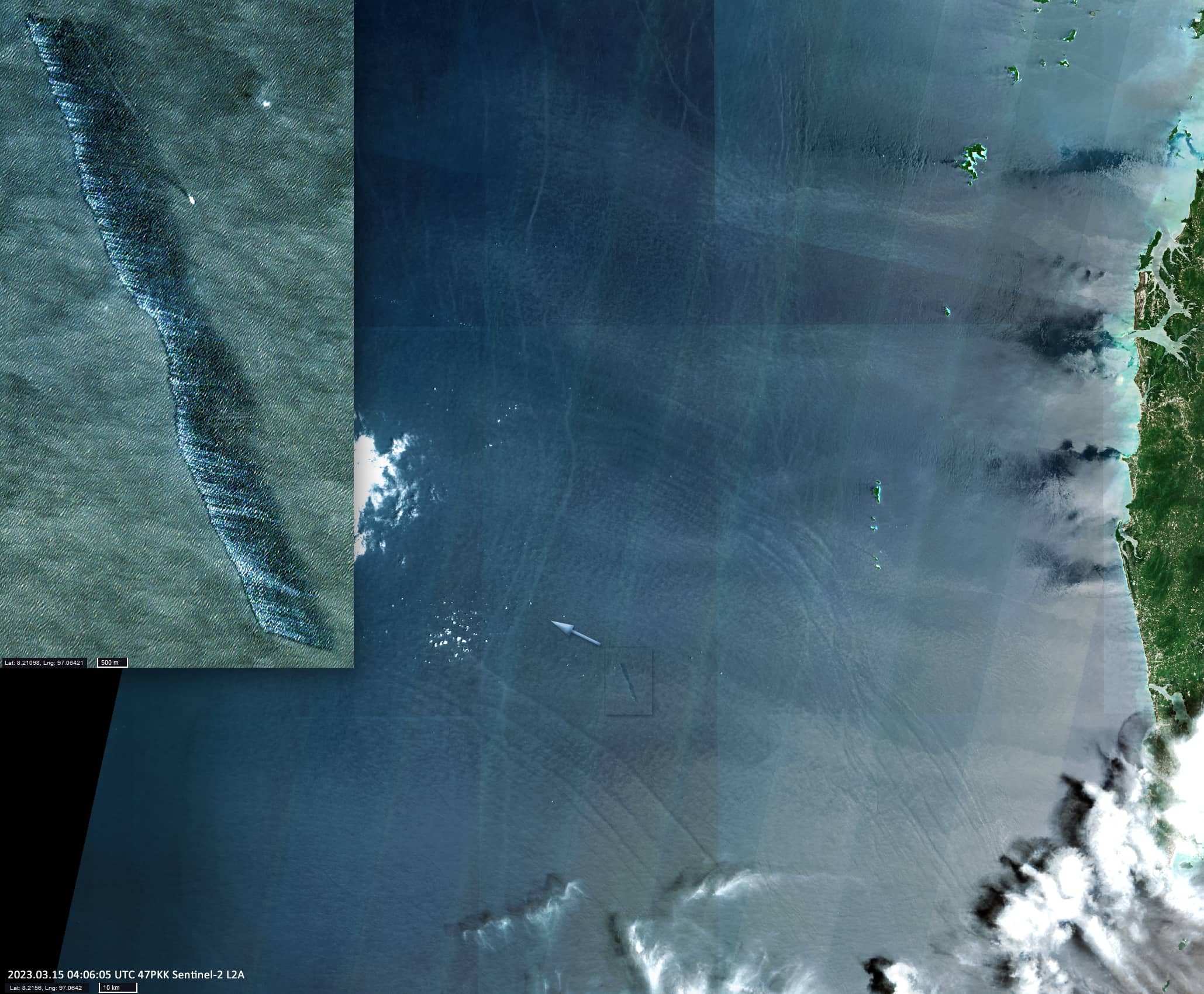
Internal Waves in the Andaman Sea
Andaman Sea | Indian Ocean
Dates of acquisition:
- March 14th, 2023 | 11:44:17 UTC
- March 15th, 2023 | 04:06:05 UTC
Sensors: Sentinel-1 AWS-IW-VVVH, Sentinel-2B L2A
Coordinates: ca. 7°N, 97°E
Unusually large internal waves or solitons can occur and be observed in the Andaman Sea in the Indian Ocean. These waves are induced by the stratification of the ocean. Differences in density and salinity cause the layers of the ocean to behave like different fluids. When they move relative to each other, waves are created within the water column. Internal waves in the ocean can be hundreds of meters high and tens to hundreds of kilometres long. And they can last for hours.
The seabed of the Indian Ocean around the Andaman and Nicobar Islands rises rapidly from 3 km to 200 m and then sinks back into the Andaman Sea. On the seabed there are shallow ridges, reefs, mountains and underwater shoals. Tides, currents, gravity and the earth’s rotation move layers of water with different properties across the uneven seabed, creating large internal waves.
The surface waters are inseparably linked to the deeper layers. They reflect in a particular way what is happening in the water column. And the behaviour of water on the ocean surface is clearly visible both on radar images and on images in the optical wavelength range where the images is influenced by direct sunlight reflection –(sun glint).
We present two variations on satellite images from Sentinel-1 (radar) and Sentinel -2 (optic).
The wave stripe (11km x 1.2km) on the additional image has a meteorological cause: it is probably the result of an abrupt descent of the cold air layer to the water surface.





